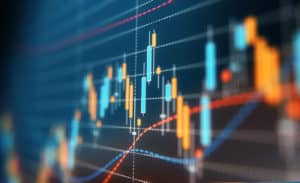 The pandemic has ripped up the rulebook when it comes to traditional norms of trading in equities and fixed income, which are undergoing a radical shake-up. There may be a return to the office, but that doesn’t mean a return to business-as-usual.
The pandemic has ripped up the rulebook when it comes to traditional norms of trading in equities and fixed income, which are undergoing a radical shake-up. There may be a return to the office, but that doesn’t mean a return to business-as-usual.
Trading has changed in both the equity and fixed income markets – especially in the latter – as the curtailed access to sell-side balance sheets created a vacuum of opportunity for alternative sources of capital in the form of electronic liquidity providers (ELPs).
The ability of ELPs to warehouse risk across a wide and more diverse pool of assets has increased the inventory that buy-side participants can engage with. Consequently buy-side dealing desks are morphing from passive recipients of sell-side liquidity to assertive participants in sourcing and building latent liquidity. The change is not subtle; the buy-side is now at the centre of liquidity formation, and this will be to the benefit of end investors.
New liquidity providers
Interviews with 30 global heads of trading at asset managers across the UK and Europe managing $35.5 trillion in assets, revealed some common threads in approaches to trading post-Covid world. The vast majority of interviewees now recognize ELPs as future strategic liquidity partners and intend to increase their engagement with them across all asset classes.
Underpinning new ways of buy-side trading are technology innovations, with technology driving the ability to uncover latent liquidity, counterbalanced by the need to hide the footprints of unfulfilled trading intentions.
The sun is setting on a traditional siloed approach to trading in favor of greater ownership of execution and reshaping both the selection of liquidity providers and services required.
That said, many still choose to trade OTC derivatives with banks for the breadth of available services and due to operational constraints. Transparency over execution protocols and routing logic are attractive factors in the selection process of counterparts, but the omnipresent spectre of counterparty risk means that access through an existing broker relationship often takes precedence over setting up a direct relationship.
Accelerated need for access to liquidity
Although the make-up of the equities and bond markets are too different to ever be exact parallels, equity automation was largely replicated during the pandemic in the fixed-income markets for orders that could be traded discreetly in small sizes over a longer period.
Razor-thin spreads mean paying the spread can have a negligible impact on fund performance, while pricing visibility, immediacy, continuity of service, and reduced risk capital during the pandemic have combined to boost the presence of ELPs.
Trading in blocks remains an important factor in sell-side relationships, but a greater proportion of equity trading centres around three key liquidity points – the EU open, US open and US close.
The impact of this is twofold: Firstly, there is an accelerated need for innovative and automated access to this liquidity, which emphasises the shift towards technology partners; and secondly, liquidity concentration reduces intraday liquidity, which impacts the ability to enter and exit the market quickly.
New options for where and what to trade
The depth of available ELP inventory also has the potential to change which assets are traded. As technology better aggregates liquidity across asset classes, the incorporation of direct feeds from banks, ELPs and venues offer a holistic view across the whole marketplace, providing the buy-side with a host of new options not only of where to trade, but also what to trade.
The dependency of any change is twofold: data and technology. As trading becomes more automated, the generation and consumption of data rises exponentially, in turn creating the ability to adapt trading strategies, blend asset classes, and spot arbitrage opportunities.
The complexity of resulting next-generation order flow demands algorithmic wheels and smart order routers that can reach into the deep into the corner pockets of the markets for liquidity. Accurate post-trade data is a prerequisite in this advanced world, and hence there is a concerted push for the same level of post-trade transparency in fixed income as the consolidated tape in the equities markets.
ELPs have also benefitted from an increase in diversification by the buy-side towards ETF flows, as their technological expertise enables them to arbitrage short-term risk and provide the tightest pricing. However, any wholesale change will take time. Although ETFs appear attractive as an investment vehicle, illiquidity in any underlying securities may limit hedging and arbitrage opportunities.
As Europe heads back to the office, a new normal is being created in the trading space. The inexorable rise of automation is moving from equities to fixed income, causing the buy-side to focus on ensuring broader access to execution from a variety of new sources and reframing relationships.
The differentiator for any liquidity provider of the future will be the ability to adapt and absorb new technology initiatives.
Future innovative and agile technology will not only seek out latent liquidity but, more importantly, build liquidity.
The incorporation of technology in buy-side workflows raises new opportunities about what assets or combination of assets to trade, in addition to how, when and where to execute trading strategies.
Liquidity formation will continue to evolve due to market changes, and asset managers will continue to rely on execution partners to navigate a more complex and fragmented landscape.
In short, the longer-term impact of the pandemic on the future trading landscape in Europe may only now be beginning.